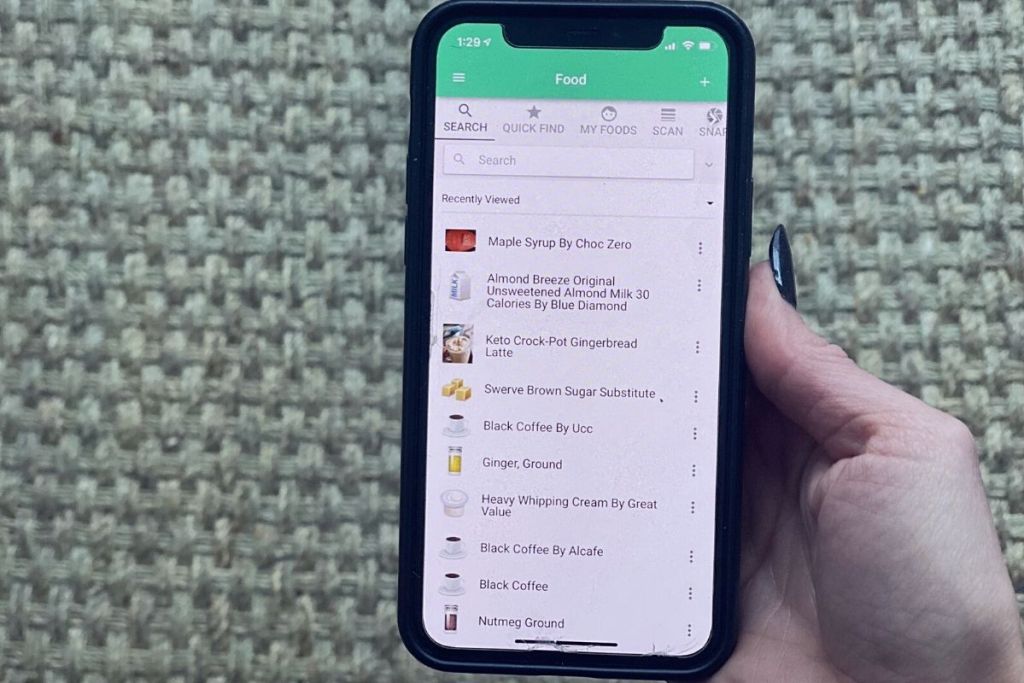How Many Grams of Carbs Can You Have on Keto?

How many carbs are too many?
One of the most common questions that people ask about the keto diet is, “How many grams of carbs on keto should I eat per day?” If you’ve done some research on your own, you probably have come across numbers ranging from 20 to 30 grams of carbs a day and might have even seen some recommendations going up to 50g of carbs a day. Confusing, right?
Well, the answer to the question of exactly how many grams of carbs on keto you can have a day is that there really isn’t a specific amount. 🤪 I know, I know… I wish I could give you an exact answer. The generally accepted rule is to keep your carbs under 50 grams a day.

What are your health goals?
So 50 grams of carbs per day might seem like a lot to many of you. How many grams of carbs on keto you eat depends on your goals and what is sustainable for you long term. If you want a number to aim for, we recommend keeping your carbs in the 20 to 50 grams of carbs a day range. If you want to be more strict, keep your carbs at 20 to 30 grams a day. You can also try to stick with total carbs instead of net carbs, which net carbs are total carbs minus fiber and sugar alcohols.
Research does show that a person can reach ketosis by keeping their carb intake at 20 to 50 grams of carbs a day. So if your goal is ketosis and weight loss, you definitely want your total carbs under that threshold. If your goal is improved health, or you just feel better on keto, you might be able to go closer to the higher end of 50 grams of carbs a day.

How many carbs can you have to be in ketosis?
The keto diet works by switching your body’s source of energy from carbs (glucose) to fat (ketones). In order for this to happen, you need to keep your blood sugar stable. Your body turns carbohydrates into glucose during digestion and glucose is what spikes your blood sugar. If your blood sugar spikes, you’re out of ketosis. Limiting carb intake to 20 to 50 grams of carbs a day will prevent blood sugar spikes.
If you want to know if you’re in ketosis at a specific carb level, try testing your ketone levels. Urine ketone test strips are the easiest and most affordable way to check ketones. Other options are a ketone breath tester or a blood ketone meter.
Hip Tip – Here are the best ways to know if you’re in ketosis.
You can also monitor your blood sugars to see if they are stable. And if you really want to know what’s going on with your body, you could try using a continuous glucose monitor. Keep in mind that this will still vary among individuals, as some people might need to keep their carbs under 20 grams to get into ketosis, and other people might be able to eat more than 50 grams of carbs a day and stay in ketosis.

Do you know how many grams of carbs on keto you’re eating?
The best way to determine your carb intake is to track the foods you eat. This is especially helpful if you’re new to keto or if you need a reset. Monitoring your food intake helps you become aware of hidden carbs and portion sizes. Try using an app like Carb Manager or MyFitnessPal.
If tracking your food intake isn’t your thing, try doing it for at least two weeks to help you get started. A lot of people just keep a running total in their heads of their carb intake once they’re comfortable with knowing about how many grams of carbs are in their daily foods. And if you make avoiding carb foods your norm, it’s fairly easy to keep your carb intake under 50 grams a day.
Have you tried tracking your carb intake? How many grams of carbs on keto do you eat each day? What’s your carb goal?
Want to learn more? Check out this article on the difference between low carb and keto.





Comments 0